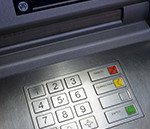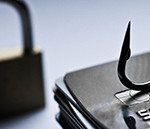Fraudulent activity using credit cards is on the rise all over the world. As more people move towards online solutions, making credit card purchases is also becoming increasingly risky.
Credit card users now have to be even more cautious than usual in order to be able to keep up with different credit card frauds.
Taking a closer look at common types of credit card frauds:
Counterfeit Card Fraud
This type of fraud involves cards being manufactured illegally by using personal information stolen from the magnetic strip of a genuinely issued card. This type of fraud is usually committed by using card skimming devices.
Lost and Stolen Card Fraud
Fraudulent transactions are conducted on a valid issued debit or credit card after the card holder has lost his or her card. Most credit card issuers have dedicated fraud departments with call centres so that credit card holders can contact them to report lost or stolen cards.
False Application Fraud
Fraudulent transactions are conducted on an account where the card was acquired by falsifying a card application.
Card Not Present Fraud
This involves a fraudulent transaction where neither the card nor the card holder is present at the point of sale.
What you can do to avoid becoming a victim of various credit card frauds:
Guard your information online. Make sure that you don’t share your information with third parties through email.
Be alert of phishing. Keep track of the latest phishing scams.
Monitor your bank and credit card statements. If you notice any suspicious activity, make sure that you contact your bank or credit card issuer and alert them immediately.
Monitor your credit report. Identity theft can inconvenience you especially when you need to get access to additional forms of credit. By law, you are allowed one free credit report check a year. Check your credit report to monitor any suspicious activity.
Shred any sensitive documents you may have.
Avoid using a public or unsecure computer for banking or online shopping.











